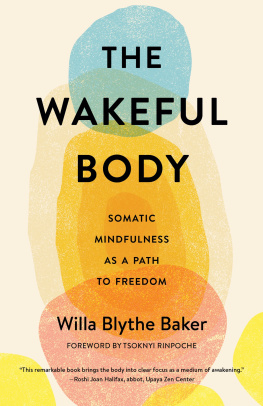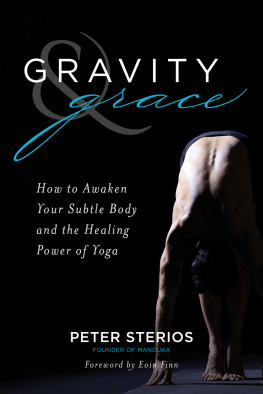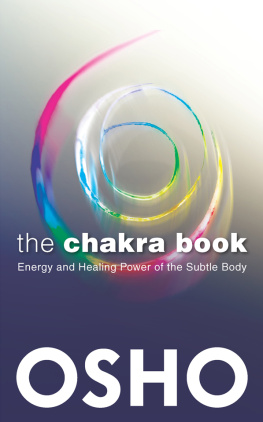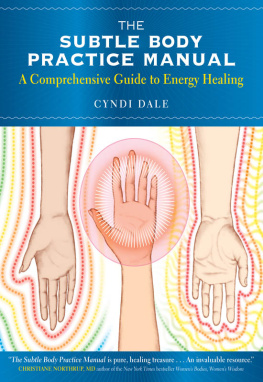
Dedication
In memory of my late husband Peter Sandhu, who would have been delighted to see this book materialize out of my mystical meanderings.
A cknowledgments
I am indebted to many people who, knowingly or unknowingly, have been involved in the production of this book. I would like to thank all students and clients, past and present, who have been my greatest teachers; my yoga tutor, Latvian poet Velta Snikere Wilson, for keeping the connection, and whose patience and forbearance through the trials and tribulations of exile have been an inspiration for over three decades; the many healers who shared their knowledge with me at just the right moments, including Dr. Ramakant Kenny, Dr. Vasant Lad, and Shrimati Shamala Chandran; the many friends who encouraged me to write a book that addresses their interests at an intelligent professional and academic level, for their patience in awaiting its arrival and their support through difficult times, among them Christine Meek, Carol Deans Shinwell, and Lady Ann Clyde; my spiritual brothers and sisters in the Yogic, Buddhist, and Tantric communities, particularly Dr. M. L. Gharote, Dharmacharyi Lokamitra, and my dear friend Swami Sivadhara Saraswati, with whom wide-ranging conversations and shared experiences, both spiritual and material, have been a gift.
I would also like to thank my academic colleagues, especially Dr. James E. Robinson, who first gave me the opportunity to write about the Subtle Body and to teach it in a university masters degree program. A special thank you goes to Gyorgyi Byworth for bringing the resulting study module to the attention of Dr. Ervin Laszlo, whom Id like to thank for enthusiastically recommending it to Inner Traditions Acquisitions Editor Jon Graham, and to Jon for his foresight in seeing its potential as a book; to my editor Laura Schlivek and the rest of the team at Inner Traditions for overseeing its rebirth.
I would like to express my grateful thanks to Professor Olga Louchakova, Dr. Arielle Warner, David Osborn, and the other authors who generously permitted me to borrow from their books and articles; to Jon Moult for the picture of his yoga class; to Bob Clyatt for his kindness in permitting me to use the picture of his beautiful sculpture of Gandhi; and last, but certainly not least, to Eric Franklin for his huge contribution, hundreds of hours of dedicated work in producing the illustrations, the chapter Science, Philosophy, and the Subtle Body, and his unflagging help and support throughout.
Contents

P reface
When I was six I had my first mystical experience. On my sixth birthday, my mother got me up at dawn to take a photograph in the garden. It was a typical summer morning in the highlands of Scotland, one of those days that starts with swirling grey mist and later gives way to balmy sunshine. As my mother was fiddling with the camera, which seemed to have jammed, I became aware of how patient and calm I felt. This was unlike me. I was a hyperactive child who did everything at high speed, so sitting still was usually torture for me. Then the mist began to clear, and suddenly from within the shrouds of grey, the Japanese cherry blossom tree in the center of the garden appeared like a vision out of a dream; I had an extraordinary sense of well-being, of connectedness, of being merged with the tree in its beingness and with the whole world that surrounded us.
I never forgot the feeling of that experience, although it only lasted minutes, perhaps even seconds. It became the archetypal sacred place to which I constantly returned whenever I needed peace, solace, guidance, or knowledge. In the spiritual life, however, I discovered that there are many ways of knowing.
The next significant experience came ten years later when I discovered yoga. When I was fourteen a TB patch had been found on one of my lungs, which explained the long and frequent bouts of bronchitis that had occurred throughout my childhood and had left me with breathing problems. I was still suffering from shortness of breath nearly two years later when I went to a badminton club with a friend and had to sit out some of the sets because I was so easily exhausted. At one point two women sat down next to me. The chairs were quite close together so I couldnt help hearing their conversation. They were talking about yoga, about which I had only the vaguest notion, but it seemed to have something to do with breathing. Just as they were going to join their friends in the next game, I found the courage to ask them if yoga could help me with my breathing problem. They said they were very sure that it could. However, as they were being called by their friends to start the next game, I didnt have time to ask how I could learn it.
Attempts to find a teacher or a class proved fruitless, so I searched the local library and, fortunately, found a do-it-yourself book written by Ernest Wood, also known by his Indian name, Shri Sattwikagraganya. Professor Wood was a Sanskrit scholar, a translator, and prolific author of works on yoga, with an interest in Buddhism and theosophy, who became the first guru of many an isolated yoga student like myself half a century ago. I say fortunately because he introduced me to the path of rja yoga, which, as John Collins points out in his book on mysticism, is the path of the spiritual warrior, requiring discipline and determination. And discipline and determination were exactly what I required over the next year as I struggled with the roles of teacher and student. Still, thanks to Professor Woods clear instructions, I succeeded in no small measure: when I went for my next x-ray, the patch on the lung had disappeared, and the breathing exercises Id learned became an indispensable part of the spiritual toolkit that helped to keep me in reasonable health thereafter.
When I was twenty, I met my first husband at the newspaper where we both worked. Fortunately for me, he was a spiritual warrior with experience and knowledge of yoga, and much else, which exceeded my own. Not only did he introduce me to meditation, but to many areas of spirituality, religion, philosophy, psychology, and, while he was writing his first novel, literature and creative writing. All of this not only opened a completely new world to me but stood me in good stead later when I worked in publishing as an editor, then eventually freelanced as a specialist in yoga, psychology, healing, and comparative religion for some of the leading London publishers at that time.
The other important skill I developed in this relationship came from the yoga and meditation that we practiced together daily, for most of the nine years we were together, whether we felt like it or not. If one of us was too tired, the other would cajole or persuade, and we would practice together even if it was late at night or early in the morning, or even if we were already late for work. When I went for an interview for a place in a yoga teacher training course, the tutor was so surprised that I had learned so much about yoga without having had a teacher or ever having been to a class that she was convinced that I had remembered from a past life. It was during this period, too, that I had other experiences, some through grace, others through effort, and many a contemplative knowing that was mediated through dreams and meditative visions.
When I was twenty-one I had a serious accident. I fell down a whole flight of concrete steps and landed on my coccyx, fracturing seven spinal vertebrae and breaking my left arm on the way. As a result I was in pain most of the time, but the daily discipline of yoga and meditation helped me to survive, to work, to study, and eventually to teach. It was during this period that I met another important guru, a very talented young chiropractor, who not only helped me back to health but also gave me many hours of his valuable time in discussing alternative medicine and lending me books to read. I was so enthused by his enthusiasm that I decided, after years of writing articles about healing and alternative medicine, that I should learn to do it myself. But after four years of studying and practicing different bodywork techniques I decided to take one tutors advice and study homeopathy. She felt it would be far less demanding on me as I got older, when all the injuries I had suffered might reduce my stamina and make it difficult for me to work.
Next page









